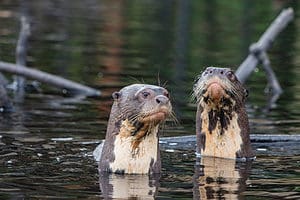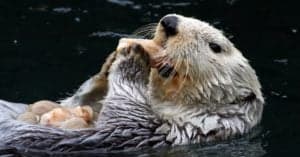Even though sea otters are “otterly” cute, there is much more to them than meets the eye. In this article, we are going to explore 10 incredible sea otter facts for your enjoyment! Have fun learning more about these exceptional creatures!
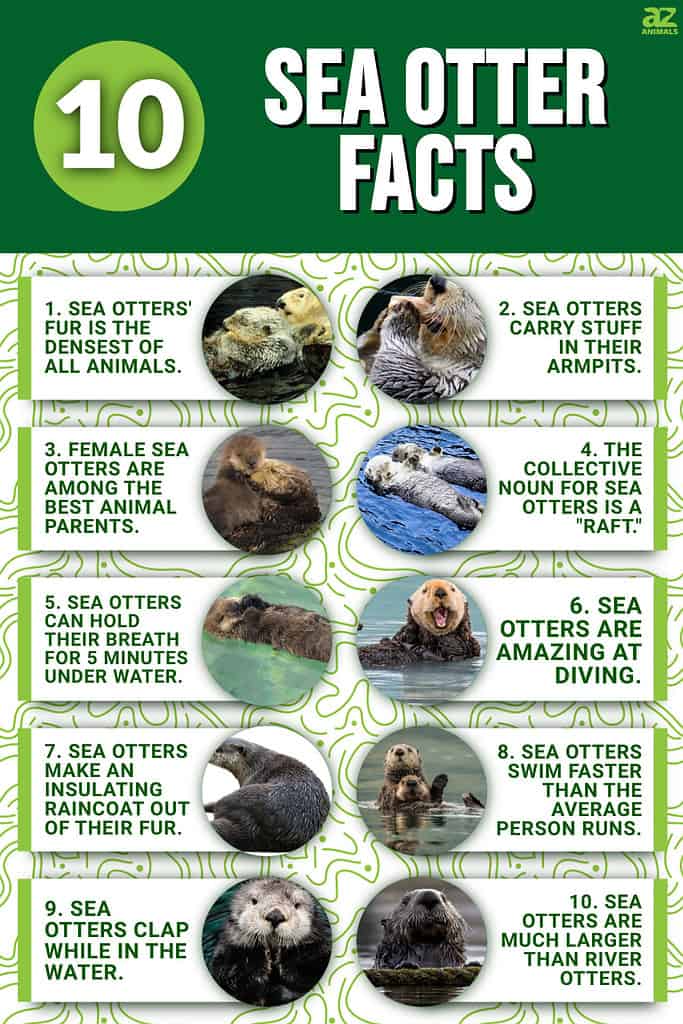
1. Their Fur Is the Densest of All Animals
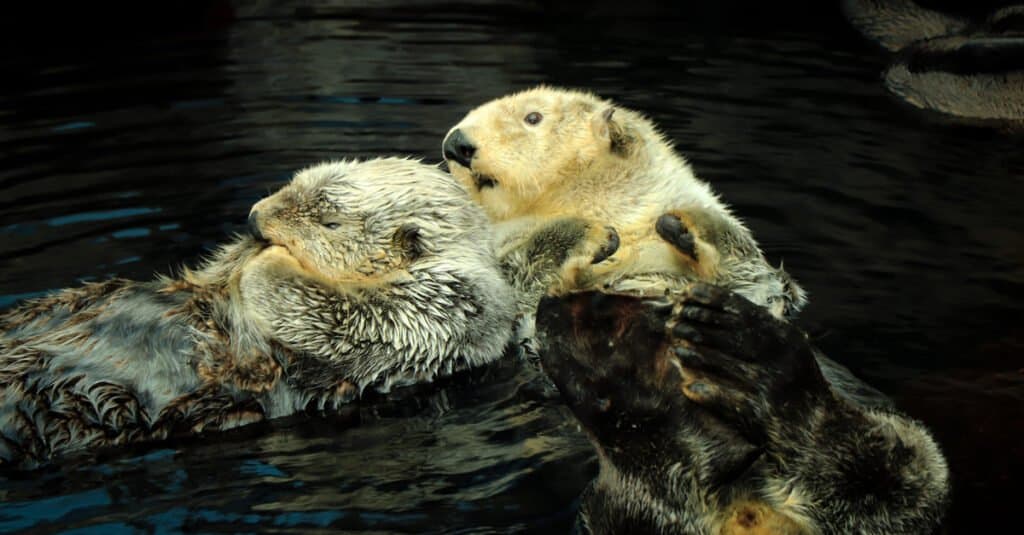
Sea otters have the highest density fur of all animals, and this is just one of the interesting facts about them!
©nvphoto/Shutterstock.com
Sea otters have the highest density of fur of all animals. They average 1 million hairs every square inch. The hair keeps them warm! Despite living in the chilly Pacific ocean, sea otters don’t have that much fat mass or blubber. In fact, without their hair, they’d freeze to death.
2. They Carry Stuff in Their Armpits
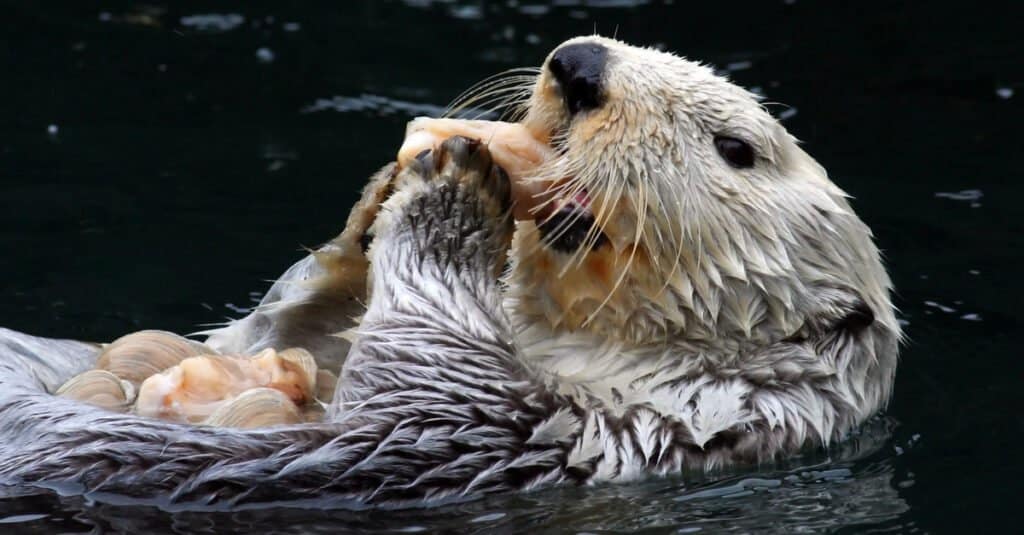
Sea otters store food and rocks used as tools in their skin folds.
©Kirsten Wahlquist/Shutterstock.com
Sea otters have built-in shopping bags under each arm. These skin folds are used to store food that they find. They also keep rocks in skin folds which they use as tools for building. These aquatic creatures consume clams, as we know. They crack open these shelled creatures using these rocks as well.
3. Female Sea Otters Are One of the Best Animal Parents on the Planet

Sea otter moms are very attentive to their babies.
©Chase Dekker/Shutterstock.com
Sea otter mothers usually have one offspring; twins are rare. Dads don’t help raise their infants. The mom is responsible and they’re always with their babies. The baby is licked so intensely by its mom that air bubbles develop in their fur to help them float!
A mother sea otter must sometimes depart to hunt food. During this time, the mom wraps her baby with kelp, so it doesn’t drift away. She will even carry her young on her chest while floating on her back.
4. “Rafts” Are the Collective Noun for Their Massive Gatherings
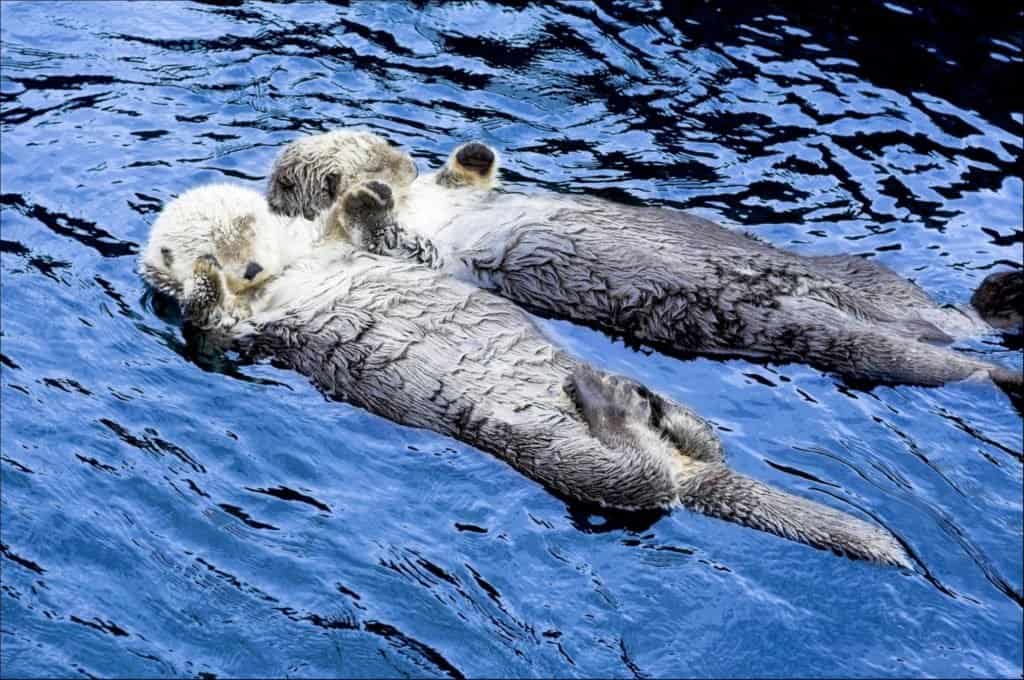
The collective noun for a group of otters is a “raft.”
©fred goldstein/Shutterstock.com
Huge groups of sea otters often congregate together for naps. At times, more than a thousand otters have been spotted at once. The collective noun for a pod is a “raft.” If you witness a large group of sea otters relaxing together, you can nonchalantly impress your company by remarking, “Wow, check out that raft of otters!”
5. They Can Hold Their Breath for Several Minutes Under Water
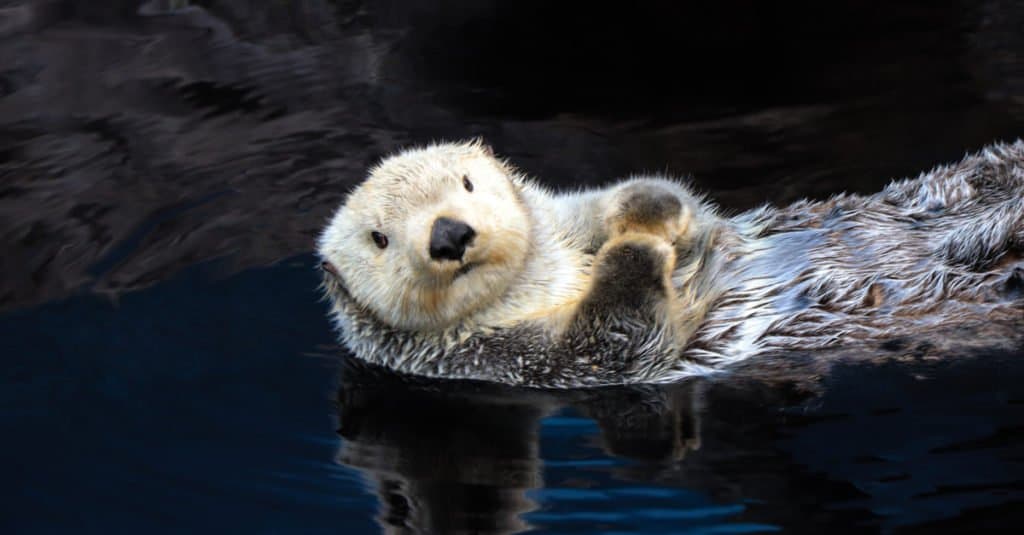
Sea otters have an enormous lung capacity and can hold their breath for up to 5 minutes.
©nvphoto/Shutterstock.com
The average time it takes a sea otter to take a breath is 2 minutes, even though they can hold their breath for as many as 5 minutes. They can search for food underwater for extended periods of time thanks to their enormous lung capacity.
6. They Are Amazing at Diving
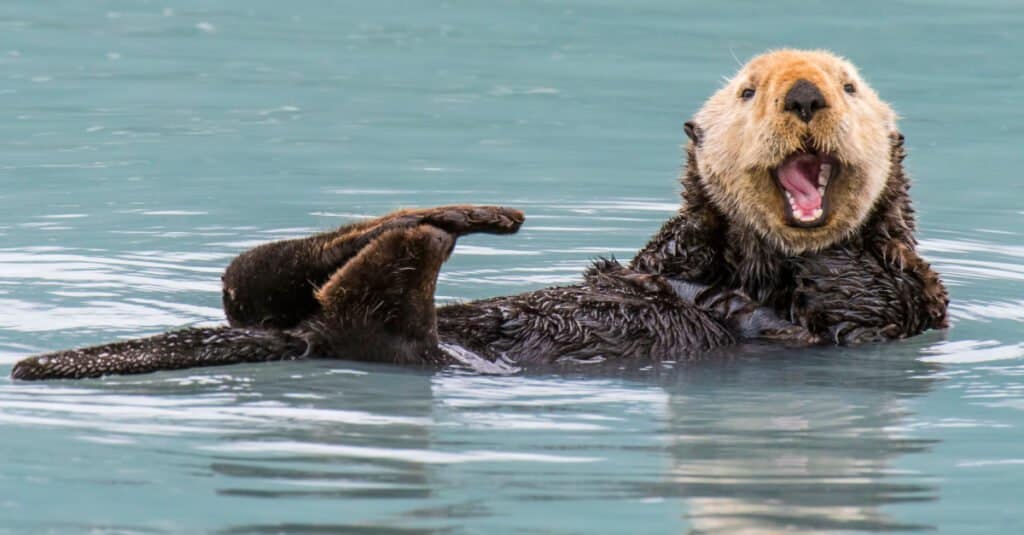
Sea otters love diving and can dive as deep as 300 feet for food.
©iStock.com/David McGowen
Sea otters love deep dives. Most of their dives are within 60 feet of the surface, although they can dive as deep as 300 feet for food. Imagine a 27-story structure. An otter could swim from the roof to the entrance, dig up clams, then swim all the way back up!
7. They Make an Insulating Raincoat Out of Their Fur
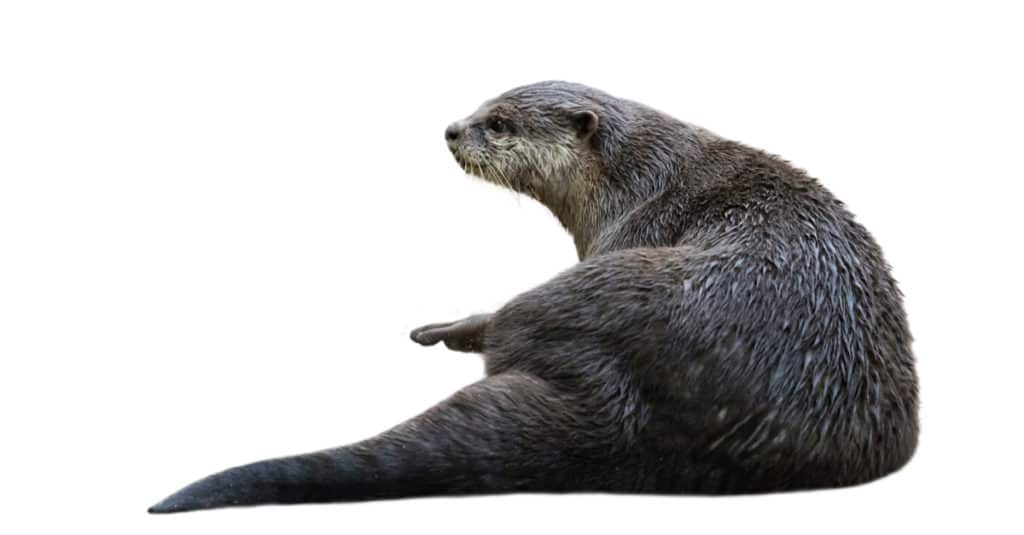
Air bubbles help create a waterproof layer in the sea otter’s coat.
©yod 67/Shutterstock.com
Floating otters stroke their fur, which creates air bubbles in their coat. This helps them create a waterproof layer just beside their skin for diving. When an otter dives deep, the pressure can get higher, and the water temperature gets colder. This pressure and cold compress the oxygen in their fur. Without this oxygen, a sea otter’s body heat would escape in seconds, and it might die from the cold.
8. They Swim Faster Than the Average Person Runs
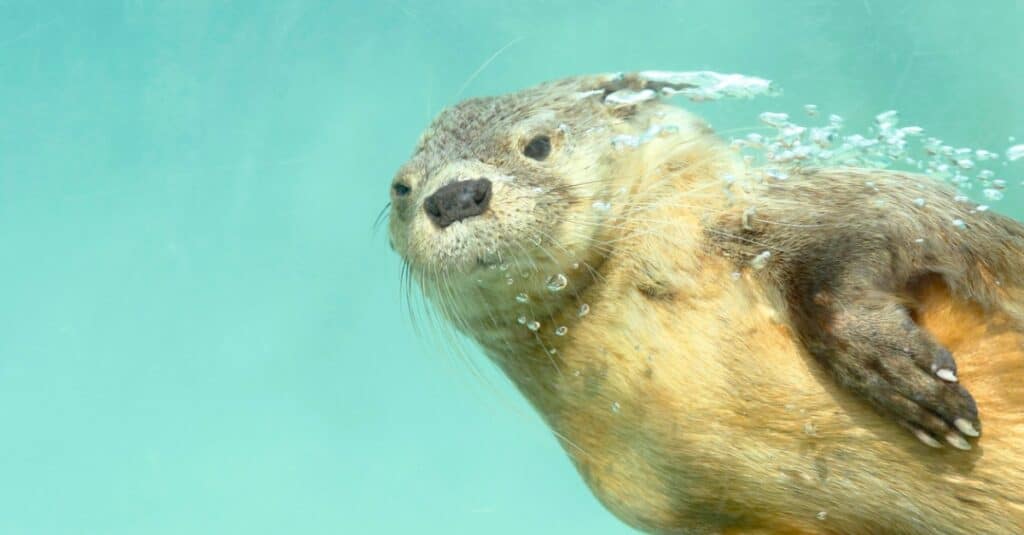
Sea otters can travel at speeds of up 7 miles per hour.
©Jonathan Chancasana/Shutterstock.com
Otters, despite their diminutive stature, are incredibly astounding due to their speed in the water. They can travel at speeds of up 7 miles per hour. This is much faster than most people can run!
9. They Clap While in the Water

Sea otters do a clapping motion to keep their hands warm above water.
©nvphoto/Shutterstock.com
An otter’s water behavior has been likened to a clapping action. Do they do this for fun? Nope! The sea otter is a creature of pure utility. To conserve body heat, they will keep their feet and hands out from the water until it is absolutely required.
10. They Are Much Larger Than River Otters, and Swim Differently Too!

Sea otters swim belly up with their flippers exposed, while river otters swim belly-down.
©Kyle Moon/ via Getty Images
The best way to know if you’re seeing a river or sea otter is by studying the body of water. Also, river otters are also longer and lighter than sea otters. In fact, a sea otter is three times as large as a river otter! They also swim differently from one another. River otters swim belly-down with their four webbed feet, whereas sea otters swim belly up with their flippers exposed.
The photo featured at the top of this post is © Laura Hedien/Shutterstock.com
Thank you for reading! Have some feedback for us? Contact the AZ Animals editorial team.




